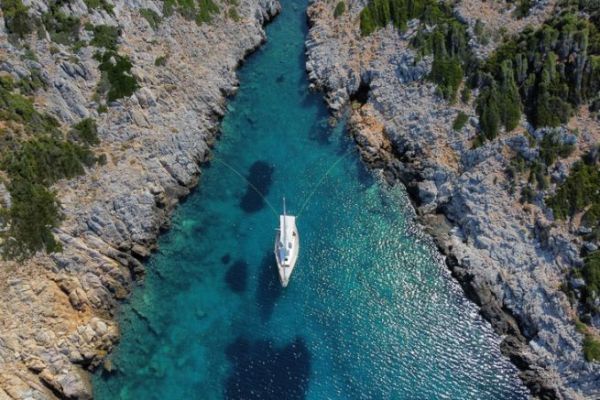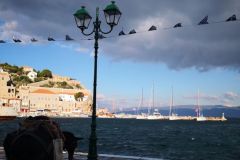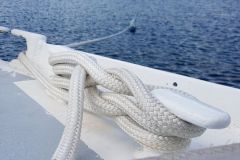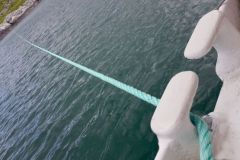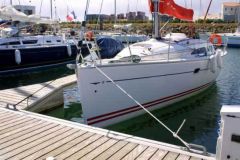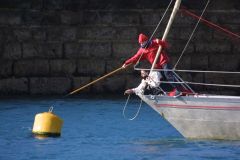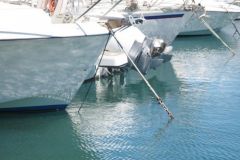In many Mediterranean coves (calas), the density of boats means that the traditional mooring system has to be supplemented by mooring lines on land. This practice, common in Greece, Turkey and certain Italian coves, raises a recurring question: should we use straps or floating ropes? Behind this apparently simple choice lie a number of technical aspects linked to the behavior of materials, wind conditions and local practices.
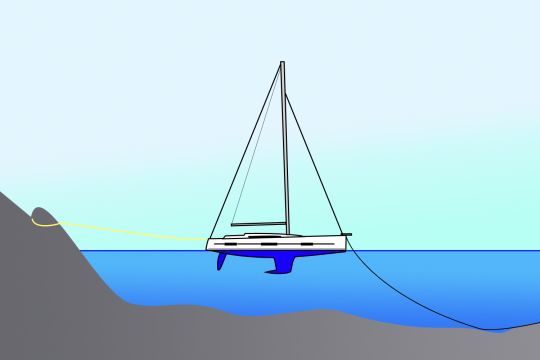
Webbing or floating rope: two different uses
The reel strap is appreciated for its compact size and quick installation. The retractor installed in the rear balcony is always in position. The strap is easy to unroll (provided you pull in the axis of the furler) and allows you to quickly grab a rock. However, several sailors have pointed out its limitations: it sinks, flaps noisily in the wind and is difficult to release under tension (cleat knot difficult to undo).
In contrast, the floating hawser, often made of flexible polyester, offers better maneuverability. It floats, avoids getting caught in the propeller and can be unrolled in advance towards the shore (thrown into the water before being towed to the rock by a swimmer). The disadvantage is that it needs to be stored in a trunk, as this type of mooring line is less resistant to UV rays.
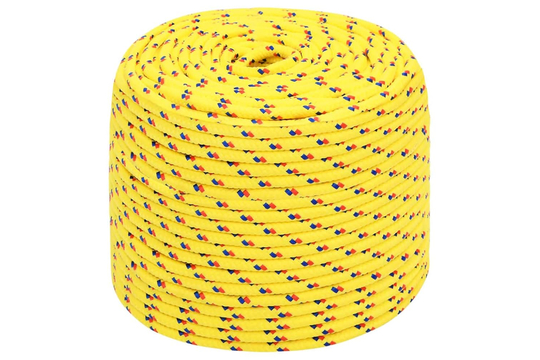
Onshore anchoring constraints in the Mediterranean
In some areas, such as Greek coves or busy Corsican anchorages, maneuvering a mooring line ashore is not a choice but an obligation. When twenty to thirty boats share a small anchorage, the two rear mooring lines become essential to stabilize the vessels. Turning winds, day and night, further complicate matters: a boat that swings around can cross a neighboring anchor and cause snags. A mooring line ashore keeps the ship in line, but requires at least a partially experienced crew to install it.
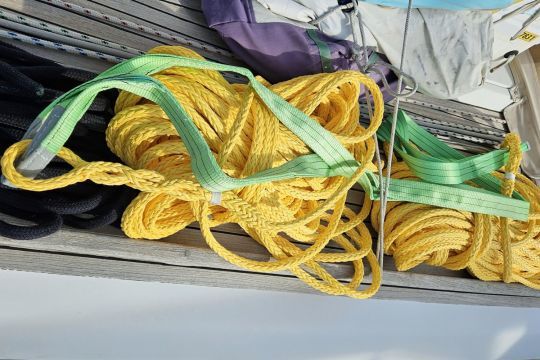
Materials, diameters and scratch protection
The choice of mooring line is not limited to type, but also to material and diameter. For a twelve-meter sailboat, some sailors recommend a floating rope with a diameter of fifteen millimeters. Soft polyester is more pleasant to handle than polypropylene, which is too rigid and sensitive to chafing. The use of a short chain ring, in addition, protects the rope from contact with sharp rocks. This five-meter loop of chain laid around a boulder ensures reliable anchoring and prolongs the life of the mooring lines. Some sailors use a webbing loop.
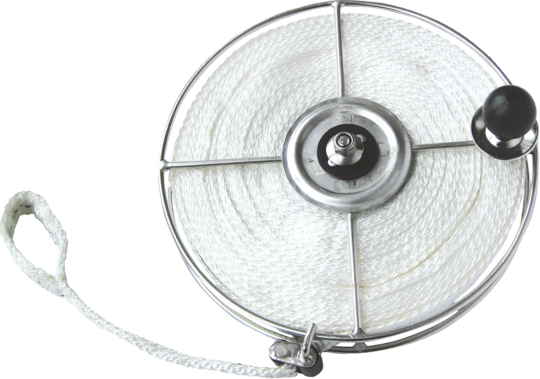
Storing and unrolling mooring lines
Beyond the material, it's the practical management that determines the success of the manoeuvre. Many sailors use basins to store 50 metres of hawser, ready to be unrolled by a swimmer or with a tender. The buoyancy of the rope makes it easy to retrieve at the start, even for a novice crew.
Straps, on the other hand, require unwinding in line with the spool, making them difficult to use single-handed. This criterion explains why many crews keep both systems on board: speed of the webbing for coasting, safety and comfort of the hawser for long-term maintenance.
Local standards and practices in Greece and elsewhere
In some areas, such as Greece, regulations require the use of bright yellow or orange floating mooring lines to ensure visibility. This is to reduce the risk of collision with other boats and to protect underwater fauna (floating mooring lines). In other Mediterranean countries, there are no strict standards, but good practice has become the norm: minimum length of 50 meters per mooring line, floating ropes for safety, and a protective chain as a complement. These habits, forged by the experience of local sailors, now form the basis of recommendations for all visiting yachtsmen.

 /
/ 